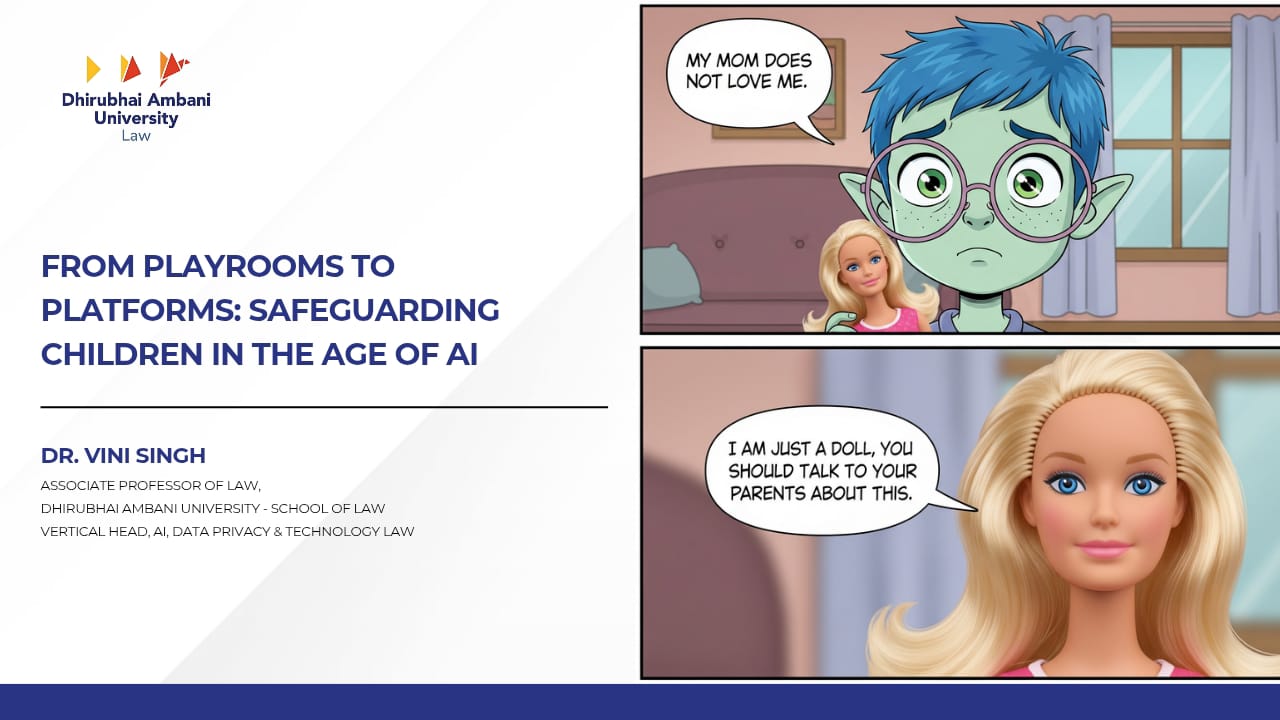
Artificial Intelligence is rapidly changing the way we live. This transformation brings a promising future for children. For instance, AI can be an extraordinary educational ally by opening new ways to learn and making classrooms more inclusive, particularly for children with disabilities. However, the same tools that hold promise for young minds also carry profound risks. When children interact with AI, they often leave behind trails of sensitive data. When that data is collected, stored, and used without sufficient safeguards, their privacy and safety can be compromised.
The question today is not whether children will use AI. They already do. The question is whether society will rise to the challenge of protecting them.
The Promise: AI as a tool to Transform Education
AI has shown remarkable potential in the classroom. Adaptive learning platforms can recognise when a child is struggling, adjust the difficulty of lessons, and suggest new approaches to help them grasp complex concepts. For children with special needs, AI can act as a bridge, offering tools like speech recognition or personalised visual aids that make learning more accessible.
In this way, AI is not just about efficiency. It is about inclusion. It can help teachers tailor lessons to individual needs and remove barriers that once prevented children from participating fully. But all of this depends on collecting and analysing vast amounts of data. Children’s information, from test results to behaviour patterns, becomes the raw material for AI-driven insights. That is where opportunity begins to blur into risk.
The Peril: Exploiting Children’s Data
The danger intensifies when AI does not rely only on voluntarily provided information, but instead scrapes the internet for data that may include children’s photos, voices, and interactions. In such cases, the child is no longer a student benefiting from AI. The child becomes a data source fueling systems they never consented to.
Many jurisdictions have recognised this risk and acted decisively. The Information Commissioner’s Office in the U.K. enforces the Age Appropriate Design Code to prevent the scraping of children’s data.i Likewise, the Federal Trade Commission in the U.S. has enacted a rule under the Children’s Online Privacy Protection Act, which requires a specific parental consent before a child’s data can be used for AI training.ii Similarly, in 2024, Brazil banned the platform X from using children’s content to train its AI models.iii That move sent an important signal to the world. Children’s data is not just another input for algorithms. It deserves special protection. Brazil drew a line that others should follow.
The Internet of Toys and Chatbots: Innocence at Risk
AI is also entering homes in new and subtle ways. Imagine an AI-powered Barbie that talks to children, remembers their preferences, and responds as if it were a friend. At first glance, it sounds charming. Yet it means the toy constantly listens, analyses, and shapes the child’s behaviour. A toy like this could encourage consumer choices or, more worryingly, influence the child in ways they cannot fully understand.
The risks grow sharper when we consider AI chatbots. Again, various jurisdictions have taken steps to protect children. The Garante, Italy’s data protection authority, banned Replika over concerns regarding inappropriate interaction with minors.iv U.K.’s ICO too had issued a preliminary warning to Snap regarding risks posed by Snapchat’s My AI.v Recently, Brazil banned Meta’s chatbots that were generating disturbing and eroticised childlike content.vi The immediate concern was harmful material. An even greater concern is that children may interact with AI systems that pretend to be trusted companions but can mislead, manipulate, or expose them to unsafe situations.
Building a Multifaceted Solution
Regulation cannot be piecemeal if we are serious about protecting children in the AI age. We need a comprehensive governance framework that places children at the centre. Four elements are critical.
First, any AI product or service likely to be used by children should undergo mandatory impact assessments before being released. Just as toys must pass safety tests before they reach the market, digital products should be required to clear assessments of privacy, safety, and long-term effects on children.
Second, AI governance must treat risks to children differently from risks to adults. A chatbot offering personalised recommendations may be moderately risky for an adult. Still, it could be perilous for a child without the judgment to filter or question its suggestions. Where children are the main or likely users, high-risk applications should be disallowed outright.
Third, age-gating protocols must be strengthened. Children should not be able to access harmful AI services simply by ticking a box that says they are over eighteen. At the same time, these protocols should protect privacy by avoiding unnecessary collection of identity data.
Fourth, the most lasting safeguard is awareness. Privacy and AI Governance Literacy is the need of the hour. An excellent example of how useful awareness could be is India’s consumer law campaign, “Jaago Grahak Jaago.” It showed how education can empower people to demand safer practices. We need a similar movement for AI, that equips families to ask hard questions, choose wisely, and demand accountability.
A Collective Responsibility
Protecting children in the AI age is not the job of governments alone. It requires responsibility from companies that design these tools, vigilance from parents and educators, and awareness across society. Brazil’s actions show that firm decisions can set global standards. However, the task ahead is to turn those isolated examples into a shared culture of protection.
Children are not miniature adults. They are more impressionable, trusting, and less equipped to guard themselves from digital risks. This makes them more vulnerable. Safeguarding them must, therefore, be the starting point, not an afterthought, in every conversation about AI governance.
If we neglect this duty, we risk raising a generation shaped more by algorithms than teachers, families, and communities. If we succeed, we can make AI a force for growth and opportunity, one that helps children learn and thrive while keeping their innocence.
- i ICO’s Children’s Code Strategy 2024 -25: 5Rights Response,
- ii FTC’s COPPA Rule Changes AI Training Consent Requirement,
- iii Brazil Bans X from Using Children to Power its AI,
- iv Italy’s DPA reaffirms ban on Replika over AI and Children’s Privacy Concerns,
- v U.K. Information Commissioner Issues Preliminary Notice Against Snap,
- vi Brazil asks Meta to remove chatbots that eroticize children,
